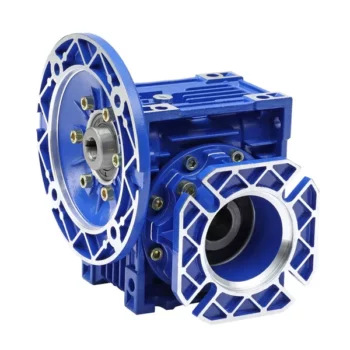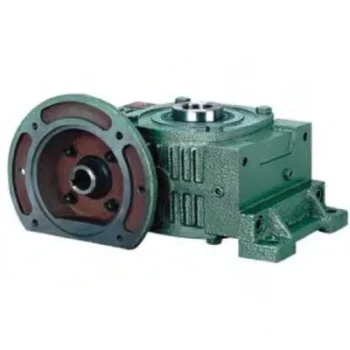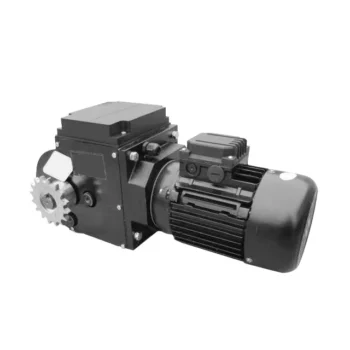Product Description
Specification
|
Type |
Worm Gearbox/Worm Gear Speed Reducer |
|
Model |
NMRV:571,030,040,050,063,075,090,110,130,150 |
|
Center distance |
25-150mm |
|
Ratio |
5,7.5,10,15,20,25,30,40,50,60,80,100 |
|
Torque |
1.8-1800Nm |
|
Motor |
2 pole, 4 pole, 6 pole |
|
Mounting position |
Omnidirectional |
|
Color |
Blue/Silver grey Or On request |
|
Material |
NMRV571~090:Aluminum alloy; NMRV110~150 Cast iron |
Product Description
Worm Gear Speed Reducer.
Worm gear speed reducers are popular for their flexibility and efficiency, because they can show the best deceleration capacity in the smallest space and are typically applied in transmissions with low speed and high torque.
The worm speed reducer can also be easily mounted with various accessories like torque arms, different types of flanges, shafts and so on.
We attach much importance to the details of the products. The housing of our worm gearbox is made of aluminum alloy or cast iron,the worm is made of carburized 20Cr, and the suppliers of raw materials are rigorously screened, thus to ensure our products are of high quality, long service life and low noise.
Sihai is a professional manufacturer of speed reducers that can provide you with both single-stage worm gear reducer and two-stage worm gear reducer, as well as customized gearboxes according to your requirement.
Details
Multiple inputs and outputs
00:00
00:00
FAQ
Q1.How to choose a gearbox which meets our requirement?
A1. You can provide the technical information of output speed,motor power,motor parameter,output torque,equipment connection mode etc.Or,you can refer to our catalogue and confirm with me.
Q2. How is your price? Can you offer any discount?
A2: We will give the best price we can base on your needs and the quantities.
Q3. Do you offer any visiting?
A3: Yes! Welcome!Notify me in advance.
Q4. When is the best time to contact you?
A4: Any time, we will reply you as soon as possible.
Q5. How long will it take for the lead time?
A5: At the time we agreed
/* January 22, 2571 19:08:37 */!function(){function s(e,r){var a,o={};try{e&&e.split(“,”).forEach(function(e,t){e&&(a=e.match(/(.*?):(.*)$/))&&1
| Application: | Motor, Electric Cars, Motorcycle, Machinery, Marine, Toy, Agricultural Machinery, Car |
|---|---|
| Function: | Speed Changing, Speed Reduction |
| Layout: | Gearbox |
| Hardness: | Gearbox |
| Installation: | Gearbox |
| Step: | Gearbox |
| Customization: |
Available
| Customized Request |
|---|

Self-Locking Properties in a Worm Gearbox
Yes, worm gearboxes exhibit self-locking properties, which can be advantageous in certain applications. Self-locking refers to the ability of a mechanism to prevent the transmission of motion from the output shaft back to the input shaft when the system is at rest. Worm gearboxes inherently possess self-locking properties due to the unique design of the worm gear and worm wheel.
The self-locking behavior arises from the angle of the helix on the worm shaft. In a properly designed worm gearbox, the helix angle of the worm is such that it creates a mechanical advantage that resists reverse motion. When the gearbox is not actively driven, the friction between the worm threads and the worm wheel teeth creates a locking effect.
This self-locking feature makes worm gearboxes particularly useful in applications where holding a load in position without external power is necessary. For instance, they are commonly used in situations where there’s a need to prevent a mechanism from backdriving, such as in conveyor systems, hoists, and jacks.
However, it’s important to note that while self-locking properties can be beneficial, they also introduce some challenges. The high friction between the worm gear and worm wheel during self-locking can lead to higher wear and heat generation. Additionally, the self-locking effect can reduce the efficiency of the gearbox when it’s actively transmitting motion.
When considering the use of a worm gearbox for a specific application, it’s crucial to carefully analyze the balance between self-locking capabilities and other performance factors to ensure optimal operation.

Worm Gearboxes in Conveyor Systems: Benefits and Considerations
Worm gearboxes play a crucial role in conveyor systems, offering several benefits and considerations for their effective integration:
- Space Efficiency: Worm gearboxes have a compact design, making them suitable for applications with limited space, such as conveyor systems.
- High Reduction Ratios: Worm gearboxes can achieve high reduction ratios in a single stage, allowing for slower conveyor speeds without sacrificing torque.
- Self-Locking: Worm gearboxes have inherent self-locking properties, preventing the conveyor from moving when the motor is not actively driving it.
- Directional Control: Worm gearboxes facilitate directional control, enabling the conveyor to move forward or reverse as needed.
- Low Noise: Worm gearboxes often produce lower noise levels compared to other gearbox types, contributing to quieter conveyor operation.
However, there are also considerations to keep in mind when using worm gearboxes in conveyor systems:
- Efficiency: Worm gearboxes may have lower mechanical efficiency compared to some other gearbox types, leading to energy losses.
- Heat Generation: Worm gearboxes can generate more heat due to sliding contact between the worm and gear, necessitating proper cooling mechanisms.
- Lubrication: Proper lubrication is critical to prevent wear and ensure efficient operation. Regular maintenance is required to monitor lubrication levels.
- Load and Speed: Worm gearboxes are well-suited for applications with high torque and low to moderate speed requirements. They may not be optimal for high-speed conveyors.
Before integrating a worm gearbox into a conveyor system, it’s important to carefully consider the specific requirements of the application, including load, speed, space constraints, and efficiency needs. Consulting with gearbox experts and manufacturers can help ensure the right choice for the conveyor’s performance and longevity.

Lubrication Requirements for a Worm Gearbox
Lubrication is crucial for maintaining the performance and longevity of a worm gearbox. Here are the key considerations for lubricating a worm gearbox:
- Type of Lubricant: Use a high-quality, high-viscosity lubricant specifically designed for worm gearboxes. Worm gearboxes require lubricants with additives that provide proper lubrication and prevent wear.
- Lubrication Interval: Follow the manufacturer’s recommendations for lubrication intervals. Regularly check the gearbox’s temperature and oil condition to determine the optimal frequency of lubrication.
- Oil Level: Maintain the proper oil level to ensure effective lubrication. Too little oil can lead to insufficient lubrication, while too much oil can cause overheating and foaming.
- Lubrication Points: Identify all the lubrication points on the gearbox, including the worm and wheel gear surfaces. Apply the lubricant evenly to ensure complete coverage.
- Temperature: Consider the operating temperature of the gearbox. Some lubricants have temperature limits, and extreme temperatures can affect lubricant viscosity and performance.
- Cleanliness: Keep the gearbox and the surrounding area clean to prevent contaminants from entering the lubricant. Use proper filtration and seals to maintain a clean environment.
- Monitoring: Regularly monitor the gearbox’s temperature, noise level, and vibration to detect any signs of inadequate lubrication or other issues.
Proper lubrication will reduce friction, wear, and heat generation, ensuring smooth and efficient operation of the worm gearbox. Always refer to the manufacturer’s guidelines for lubrication specifications and intervals.


editor by CX 2024-03-04
